
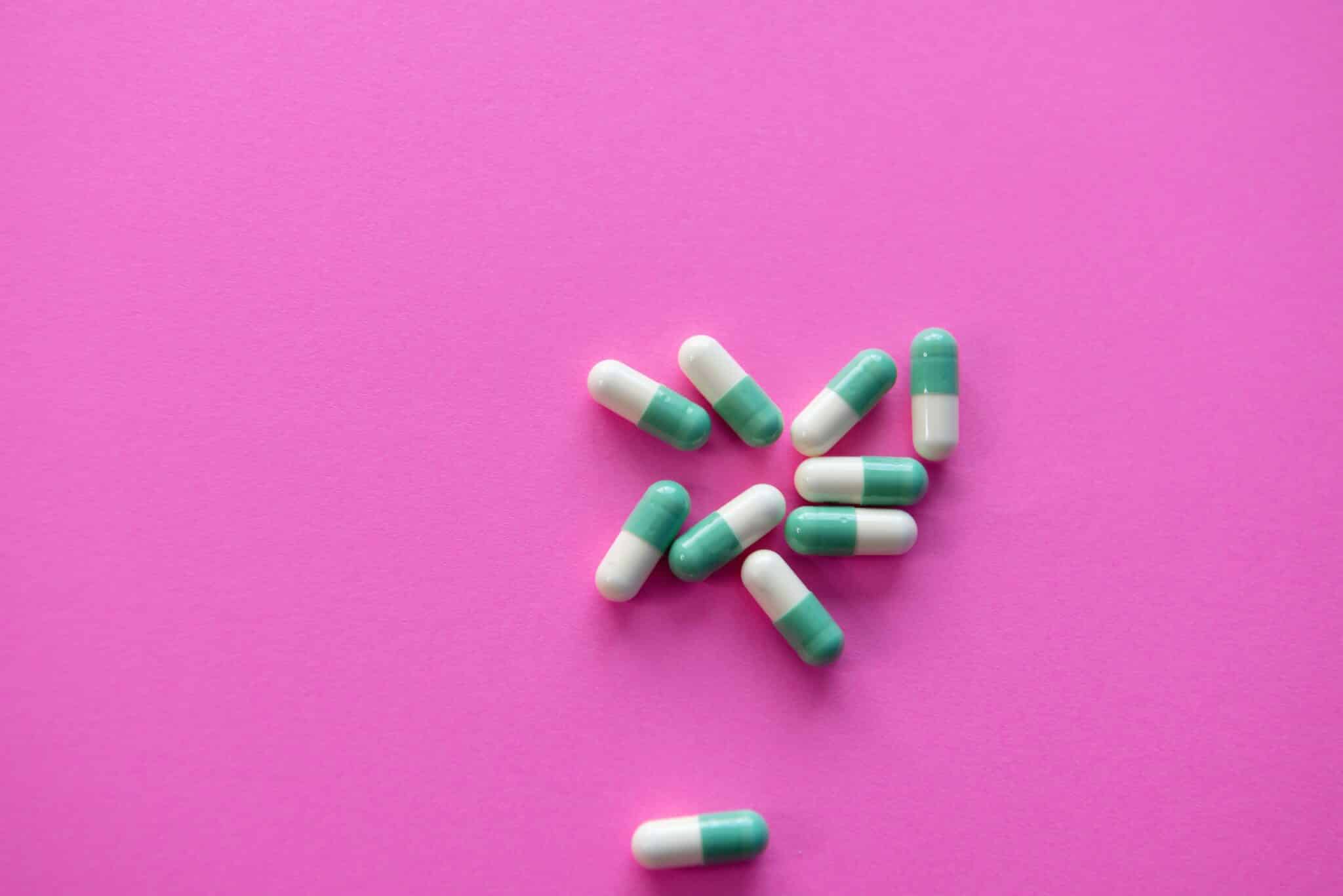
Christina Victoria / Unsplash
It’s hard to discuss the secrets to a healthy microbiome without mentioning probiotic supplements. But with so many options on the market, how do you know the best probiotic for you?
We break down the ins and outs of probiotics, including the best probiotic supplements available and what to look for in a high-quality probiotic. We also explain the different strains, number of CFUs, the difference between probiotics and digestive enzymes, and the benefits that these dietary supplements may have on your overall health.
What are Probiotics?
Probiotics are good-for-you living organisms and beneficial bacteria that thrive in your digestive system. Contrary to popular belief, not all bacteria are bad for us. In fact, probiotic strains contribute to digestive health, which in turn supports your immune system and overall health. Taking a probiotic can sometimes be just as effective as taking a supplement to boost your immune system.
Our bodies need probiotics to maintain the right balance between good and bad bacteria within the gut. This balance keeps our digestive systems operating normally. In particular, probiotics stimulate the nerves responsible for moving food through the digestive system. This helps alleviate certain health issues, including irritable bowel syndrome (IBS), diarrhea, and even eczema and allergies.
Some probiotic strains help your gut absorb medications more effectively and turn elements of the food you eat into vitamins that your body needs to thrive. In this way, a well-fed and active gut microbiome is key to a healthy immune system and metabolism.
So how do the tiny organisms do all this work? Again, it’s all about balance. If bad bacteria enter your body and threaten to make you sick, the probiotics you eat or consume in a supplement counteract these bad actors to keep you healthy. Likewise, beneficial gut bacteria fight inflammation, which is a factor in many leading chronic diseases in the U.S., including diabetes and heart disease.
How can you support your microbiome with plenty of probiotics? First, you can eat foods that naturally contain probiotics. These natural sources include fermented foods, such as yogurt, sauerkraut, miso, kefir, kimchi, kombucha, and tempeh.
However, if you want to maximize the good bacteria in your gut and reap the health benefits of probiotics without drowning in miso soup, then a supplement might be right for you. Just like a daily vitamin subscription can help support your overall health, a daily probiotic may help boost your immune and digestive health.The key is to find the best probiotic for your needs.
Our Picks for the Top Probiotic Brands
Each product featured here has been independently selected by the writer. You can learn more about our review methodology here. If you make a purchase using the links included, we may earn commission.
- Best Overall – Sunwarrior Probiotics
- Best Prebiotic – Bulletproof Innerfuel Prebiotic
- Best Probiotic + Enzymes – Onnit Total Gut Health
- Highest CFU – Global Healing Floratrex
- Best Plant-Based – Vital Plan Advanced Biotic
- Best for Exercise Recovery – NutraOne Probiotic X
- Best Probiotic + Fiber – Poophoria Rhythm & Harmony
- Best for Travel – Care/of Gut Check Probiotic
How We Chose the Best Probiotics
Here are the factors we considered to create our list of the best probiotic supplements.
Probiotic Strains
We looked to see how many different probiotic strains were included in each product and the types of strains used.
Number of Colony Forming Units
The number of Colony Forming Units, or CFUs, is the number of active microorganisms present in each serving of the probiotic.
Other Ingredients
We noted if the supplement contained additional digestive enzymes, fiber, or prebiotics to help boost digestive health.
Dietary Concerns
The best probiotics are also vegan, gluten-free, dairy-free, soy-free, and non-GMO.
Our Top Online Picks for Overall Gut Health
Best Overall: Sunwarrior Probiotics
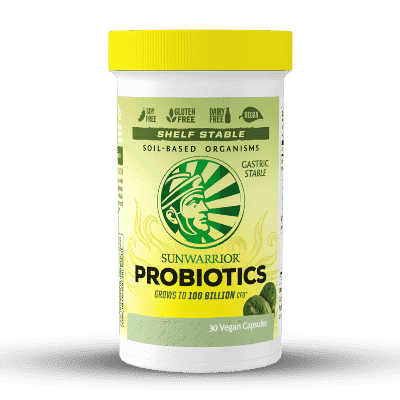
sunwarrior.com
- Strains – 4 active strains
- Strength – 10 billion CFU
- Added Ingredients – 4 strains of non-fiber phage prebiotics, spinach extract
Why buy: Sunwarrior Probiotics include 10 billion CFU of four different active soil-based probiotic strains. These soil-based organisms are thought to be more naturally resistant to the harsh conditions in your gut, giving them a better chance at thriving to help your digestion. We like that this probiotic is also vegan and plant-based, and includes four strains of prebiotics and Solarplast, a unique spinach-extract that provides added chloroplasts.
Best Prebiotic: Bulletproof Innerfuel Prebiotic
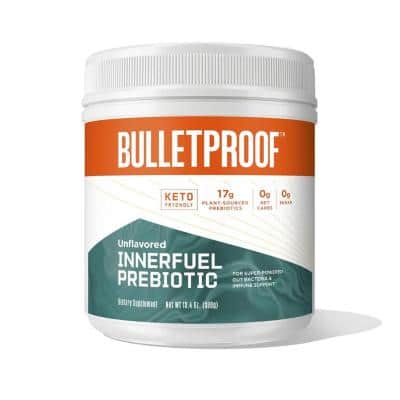
bulletproof.com
- Strains – None
- Strength – 17 grams of prebiotics
- Added Ingredients – Organic acacia, guar fiber, Larch Arabinogalactan (bark and heartwood of Larch tree)
Why buy: Bulletproof Innerfuel Prebiotic is a keto-friendly, plant-based source of prebiotics designed to help nourish and boost the good gut bacteria in your body. It contains organic acacia, guar fiber, and nutrients from Larch tree bark and heartwood that feed the bacteria in your microbiome to support healthy digestion and your immune system. Mix this unflavored powder into smoothies or drinks to get the most out of your probiotics.
Best Probiotics + Enzymes: Onnit Total Gut Health
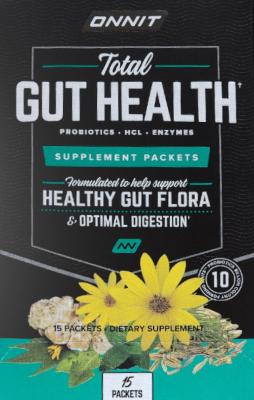
onnit.com
- Strains – 5 active strains + Saccharomyces Boulardii yeast
- Strength – 10 billion CFU probiotics blend; 5 billion CFU S. Boulardii
- Added Ingredients – Full spectrum digestive enzyme blend, Betaine HCI, organic Jerusalem artichoke root, organic dandelion root
Highest CFU: Global Healing Floratrex
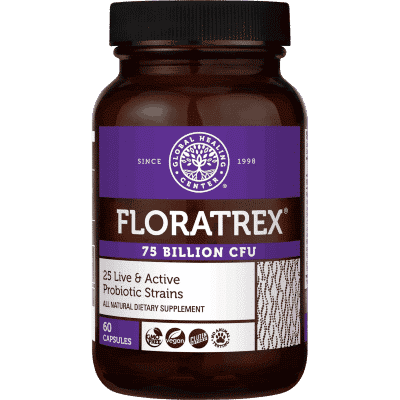
globalhealing.com
- Strains – 25 active strains
- Strength – 75 billion CFU
- Added Ingredients – Prebiotic blend, including a patented PreforPro® Bacteriophage Prebiotic
Why buy: At 75 billion CFU and 25 active strains, Floratrex from Global Healing is the strongest probiotic on our list. Each probiotic strain is designed to help promote healthy digestion, reduce gas and bloating, and can help boost your immune system. This vegan and gluten-free supplement also contains a unique prebiotic blend to help the good bacteria thrive so you can enjoy better gut health and overall wellness.
Best Plant-Based: Vital Plan Advanced Biotic
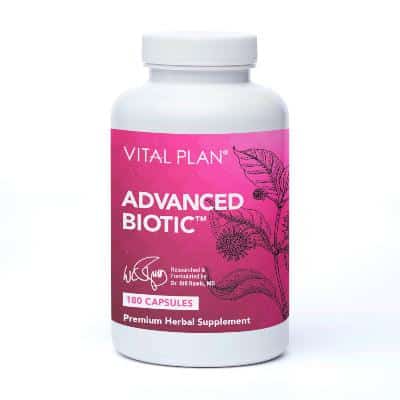
vitalplan.com
- Strains – 6 clinical grade herbs to support microbiome
- Strength – 1.3 grams of herbs per serving
- Added Ingredients – Plant cellulose capsule, rice flour, rice hull concentrate, plant-based magnesium stearate
Why buy: While not technically a probiotic, Vital Plan Advanced Biotic can help promote digestive health and a balanced biome. It contains 6 clinical-grade herbs that work to help support your gut flora, including Japanese knotweed, Cat’s Claw, andrographis, garlic, sarsparilla, and barberry. We like Advanced Biotic from Vital Plan because it offers an herbal option to promote healthier digestion and to nourish your microbiome.
Best for Exercise Recovery: NutraOne Probiotic X
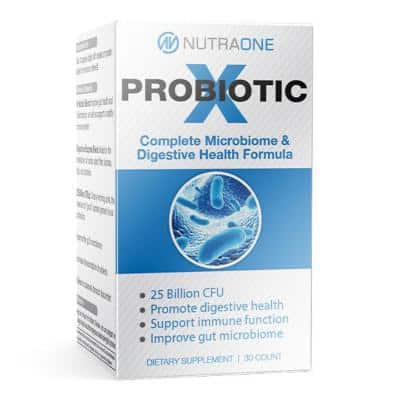
5starnutritionusa.com
- Strains – 11 active strains
- Strength – 25 billion CFU
- Added Ingredients – Proprietary enzyme blend, NUTRAFLORA FB P-95 (Fructooligosaccharides)
Why buy: NutraOne Probiotic X is designed to support healthy microflora in your digestive system for healthier digestion, immune system functioning, and even recovery from exercise. It includes the probiotic strain DE11, which may help to reduce inflammation in muscles after workouts. We like this probiotic because it can help you feel less bloated while boosting your ability to digest proteins.
Best Probiotic + Fiber: Poophoria Rhythm + Harmony

getpoophoria.com
- Strains – 2 active strains
- Strength – 20 billion CFU
- Added Ingredients – Sunfiber (water-soluble dietary fiber)
Why buy: The Poophoria Rhythm and Harmony bundle is meant to both balance your microbiome to perform at its best and help ease digestion. The Harmony probiotic includes active strains of Lactobacillus casei and Bifidobacterium lactis that can improve your digestive health and support your immune system. The Rhythm supplement includes soluble fiber and magnesium to improve the health of your intestine and colon, and to activate digestive enzymes in the gut.
Best for Travel: Care/of Gut Check Probiotic
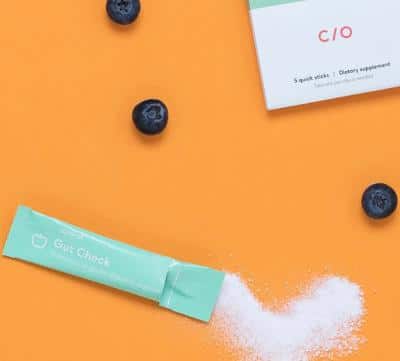
takecareof.com
- Strains – 2 active strains
- Strength – 1.5 billion CFU
- Added Ingredients – Natural flavors, tapioca starch, maltodextrin, magnesium oxide, xylitol, erythritol
Why buy: We love these Care/of Gut Check probiotic quick sticks because they make it easy to support healthy digestion and microflora on the go. Each stick contains 1.5 billion CFU of two important stains of good bacteria, B. longum and B. lactis. The probiotic powder has a blueberry flavor, and is quick dissolving so you can take it without water. Gut Check probiotics are perfect for travel, the gym, or the office.
The Benefits of Probiotic Supplements
Why should you add a probiotic supplement to your daily routine? For starters, if you don’t enjoy eating a lot of fermented foods, taking a daily supplement of live bacteria can ensure that you enjoy the health benefits of probiotics without majorly altering your diet. A probiotic supplement works just like taking vitamins and supplements for dry skin or adding a plant-based protein powder to your diet. Simply find the brand and form you will be comfortable taking each day to boost your health.
By taking a daily probiotic product, you may reduce the risk of serious and uncomfortable digestive concerns. Some studies, including a six-week study on 70 petrochemical workers, suggest a link between regular probiotic supplementation and a reduced risk of depression and anxiety. Probiotics have even been shown to help boost the immune system and may help your body fend off respiratory infections.
There are also weight-loss benefits of probiotics. Probiotics can help increase satiety by increasing fullness hormones, leading you to eat less and experience fewer cravings. Some types of bacteria, such as Lactobacillus gasseri, are linked to a reduction in belly fat and BMI in human studies.
What to Look for in a Probiotic Supplement
There are a few important things to look for when choosing the best probiotic supplement.
Multiple Bacterial Strains
Opt for a supplement that contains multiple bacterial strains. Brands offer everything from one to dozens of probiotic strains, and studies suggest that multi-strain supplements offer more health benefits than single-strain.
CFU Count
Each organism in a probiotic supplement is called a colony-forming unit, or CFU. Ensure that your product lists a specific CFU count, which can range from 1 to over 900 billion per dose. Supplement manufacturers are only required by the FDA to list the total weight of bacteria in their products. However, this weight can include living and dead bacteria. Since you can only reap benefits from live microorganisms, CFU count is the best measure of a supplement’s potency.
In addition, bacteria die off over time. So after checking the CFU count, ensure that the product lists CFUs at expiration, not at the time of manufacture.
That being said, more CFUs does not always equal better results. Because everyone’s microbiome is different, there’s no rule for selecting the right number of CFUs for you. The best probiotic supplements will be somewhere around 50 billion, and remember that more is not always better, but is usually more expensive.
Lab Testing
The best products are third-party lab tested. This means that an independent scientific lab has assessed the product for effectiveness and to ensure that it meets claims outlined on its packaging, including the number of CFUs and potency.
At the end of the day, there’s a lot of information to dig through to choose the best probiotic supplement for your lifestyle. But with a better understanding of the jargon and what to look for on packaging, you can be a better-informed consumer and find the right product to help your microbiome thrive.
How to Use a Probiotic
Most probiotics are nutritional supplements that you take daily, either as a capsule or a powder. Some brands recommend taking them with a meal while others advise taking your probiotic before eating. Almost all are best taken with a full glass of water. Many people take probiotics year round to support ongoing gut health, while others take them for a certain period of time to help rebalance their microbiome. Probiotics can also be good for travel if you suffer from digestive issues while on the road or flying.
Safety & Side Effects
According to the Cleveland Clinic, probiotics are generally considered safe since they contain bacteria and microorganisms already present in the human body. In the first few days after taking them, they can cause upset stomach, diarrhea, and bloating as your digestive system adjusts to the new strains of probiotics.
There are certain instances where people should be extremely cautious when taking probiotics because of a risk of infection. This includes those with a weakened immune system, those who recently had surgery, and anyone with a critical illness. Though rare, probiotics are linked to certain side effects including a risk of infection, developing a resistance to antibiotics, and developing harmful byproducts from the supplement.
Always talk to your doctor before starting probiotics, especially if you have any serious digestive or gastrointestinal disorder or illness.
Lizzy Briskin is the founder of Earthen Food Co. She is a chef, food writer, and recipe developer who helps people eat more mindfully for themselves and the environment, without overthinking it.
- The 19 Best Foods to Improve Digestion - EcoWatch
- Probiotics 101: Everything You Need to Know - EcoWatch
- When's the Best Time to Consume Probiotics? - EcoWatch
- 2021 Best Digestive Enzymes: Guide and Brand Reviews
- 2021 Seed Probiotic Review: Can It Improve Digestive Health?
- 9 Best Probiotics for Women in 2021: Guide and Brand Reviews

 233k
233k  41k
41k  Subscribe
Subscribe 